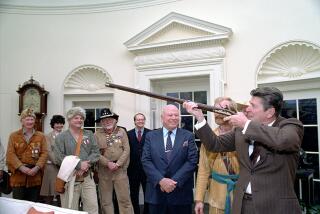Three Questions for Kevin Phillips
- Share via
Question: When did “class” become the third rail of American politics?
Answer: Conservatives tried to make class conflict something to frown on in 1896 and 1932, but without great luck. The turning point came when the success of the New Deal greatly reduced the share of wealth and income going to the top 1%, and as democracy and a middle-class ethos carried into the 1950s and 1960s, “plutocracy” began to seem like an old threat that no longer existed. Now the concept of an economic “over-class” is as relevant again as it was in 1896.
Q: To what extent does the health of America’s democracy rest on a prosperous middle class, and how seriously is that prosperity compromised by a widening gap in relative wealth?
A: Plato thought that the conflict between the rich and the poor threatened democracy. Aristotle thought that a strong middle class was the best basis for politics. Both were right, and still are. In today’s United States, the widening wealth gap helps breed survival-of-the-fittest attitudes and monied control of politics which further undercut the middle class. The share of U.S. household income going to the middle quintile of the population, for example, has been falling for decades.
Q: Gore Vidal insists that the country is ruled by a single party with two virtually indistinguishable factions, one called “Democratic,” the other “Republican.” Do you agree? And, if so, what danger does this pose for the political health of the republic?
A: In different ways, the late George Wallace and Ralph Nader have said much the same thing. My view is that there are real differences between the parties, but the economic ones are not as sharp as they should be because too many politicians, including too many liberals, have to raise too much money from corporations and fat cats. On many backstairs issues, big contributions call the shots, and what used to be the Vital Center of American politics has become a Venal Center.
More to Read
Get the L.A. Times Politics newsletter
Deeply reported insights into legislation, politics and policy from Sacramento, Washington and beyond. In your inbox twice per week.
You may occasionally receive promotional content from the Los Angeles Times.










